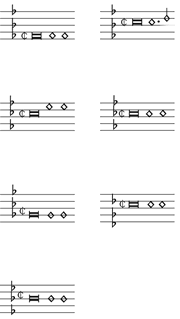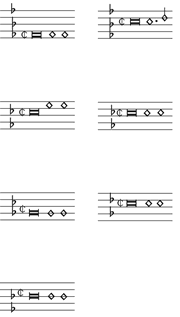Grace actendant ou la mort pour tous mes 4v · Mureau, Gilles
Source:
*Florence 176 ff. 46v-48 “Grace actendant ou la mort pour tous mes” 4v G mueran (unicum) · Edition
Edition: Droz 1924, pp. 43-48 (faulty, published as a rondeau).
Text: Bergerette; in Florence 176 incomplete refrain and incipits only for the 2nd section; the complete poem is found in Jardin 1501, f. 96:
Grace actendant ou la mort pour tous mes
J’ay trop esté d’esperance abusé,
Labuer en vain j’ay mon temps en usé,
L’eure maldis que tant ame jamays.
En grant peril est ung povre amoureux
S’il se submet au danger de tel dame:
Mourir pourroit chetif et langoureux
Vingt foiz et plus sans que pitié l’entame.
Riens n’y vault sens ne servir d’entremes,
Estre subtil ne faire le rusé.
Viengne qui peut, je vivray desormais
En nonchaloir, car g’y ay trop musé
grace actendant ou la mort pour tous mes.
Acrostic GILLES MUREUE; missing words and lines supplied after Le Jardin de Plaisance, Verard, Paris 1501. – This collection of poems is often faulty in its rendering of the texts. We must presume that the poet knew how to spell his own name; and the rimes of refrain and tierce demand a reversal of the two last lines. Taking this in consideration, it is easy to reconstruct the poem and obtain a more meaningful acrostic:
Grace actendant ou la mort pour tous mes En grant peril est ung povre amoureux Mourir pourroit chetif et langoureux Riens n’y vault sens ne servir d’entremes, grace actendant ou la mort pour tous mes Acrostic GILLES MUREAU |
Waiting for grace or death as my reward An unlucky lover is in great peril He may die frail and longing Nothing, neither wisdom nor being amusing, |
Evaluation of the source:
Copied by the main scribe without any errors in the music. The upper voice has in the first part of the bergerette a perfunctory texting with omission of words, which the scribe could not find room for. He did, however, aim at beginning every line with the correct words below the music. It is possible to reconstruct the complete text from the version in Le Jardin de Plaisance, see above.
The song is notated with four voices in the first section (two high voices, a tenor and a low contratenor), and with three high voices in the second section (tenor and contratenor drop out). This is not a three-part song with a “fragmentary added 4th voice“ (Richard Freedman in ‘Mureau, Gilles’ in Grove Music Online; accessed May 2011). It is an original working out of the principle of contrast characteristic of the bergerette: Here the contrast is not brought about by mensuration, rhythmical ductus or modal colouring, but by vocal instrumentation. Two worlds of sound are juxtaposed, both quite new in the secular music of the 1460s: a four-part voice disposition (a group of boys on the upper parts and two men) contrasting with three equal high parts (three boys solo?) – and corresponding to the poem’s two sets of rimes.
The notation of the highest voice in a G-clef (G2) with a key signature of three flats positioned at f’, b’ and f’’ might be evidence that the song originally was notated without the use of letter-clefs (the usual interpretation of the f’’-flat as an indication of high range and the deployment of the ficta high C-hexachord is not applicable in this case as the second section demands the use of e’’-flat!). The original notation could have been in formations of fa-clefs alone, three or two flats in each voice are typical. This means that the song was notated not at a fixed pitch, but could be performed at any convenient pitch. The fa-clef notation seems to have been used by composers around Binchois and in Central France in the 1450s and the early 1460s (Ockeghem, Barbingant, Le Rouge). Knowledge of the notation soon faded away, and the songs were then transmitted in fixed-pitch notation (concerning fa-clefs, see my article ‘On chansons notated in fa-clefs – and the question of pitch in 15th century secular music’)
The original fa-clef disposition could have been (probably reduced to two fa-signs in the lower parts):
 or
or 
In both cases, but especially if the lower voices have only two signs, this would result in an interesting intellectual game at the passage from the 1st to the 2nd section, where different combinations of voices are used.
Including the contratenor the total range of the song is two octaves and a fifth. However, its tessitura as written lies so high that it is possible to perform the song at a lower pitch. If we presume that the original notation did not use letter-clefs, it may be part of a sophisticated poetic-musical setup, a play at the medium that also includes the poet-composer hiding his own name in the acrostic and the use of vocal sound as the main contrasting element.
Comments on text and music:
The downcast love poem is written in the poetic style of the rhétoriqueurs; the poet-composer’s name is built in as an acrostic formed by the first letters of the verse lines, GILLES MUREAU, and the rimes are strong, two sets of rimes léonines, one set in refrain/tierce and another in the contrasting couplets. The most remarkable trait in the musical setting is the way in which this contrast is emphasized by the vocal scoring of the song with the first section for four voices (mixed boys and men) and the second for the high voices (boys).
The music is composed with careful regard of the words in all four voices. It is easy to place the text in such a way that the words either are pronounced simultaneously or in turn in the parts without disturbing the clarity too much. The three ‘normal’ voices of the first section, superius, tenor and contratenor, behave in a normal way: superius and tenor an octave apart, and the contratenor a fifth below the tenor without much crossing of parts. A canonic imitation at the octave between tenor and superius unfolds in bars 21-27. The 2nd superius weaves in the space between the superius and tenor; in a few instances (bb. 2-3, 22, and 31-32) it crosses above the highest part, and in bars 30-37 the two high voices perform a sort of voice exchange. The composing with four parts is very skilfully handled.
In the bergerette’s second section the tenor and contratenor drop out, and a new, third superius part enters. The 2nd superius takes over the tenor functions, while the new voice is placed between the 1st and 2nd. This brings along some faulxbourdon-like passages, especially in bars 52-55, which form a nice contrast to the sound of the first section, and in bb. 55-60 all three participate in a free unison canon on a triadic motive – the 2nd superius speeding up the activity.
As it stands in the MS, the bergerette ends in a quite unorthodox manner, if a complete final repeat of the refrain is performed. The four-part first section ends in a cadence to the fifth degree of the mode and with a third in its final chord. This effect is surely meant to pull the music forward towards the couplets (or the repeat of the first section). Moreover, a complete repeat spoils the meaning of the acrostic. The song is certainly designed to end with a ‘short refrain’, a literary convention which requested the poet to create the first line (or the first words, ‘rentrement’) in such a way that it could stand as the opening of the poem as well as the conclusion of the argument developed in the tierce (a task made more difficult in the rondeau). This means that the bergerette, as shown in the edition, has to end in bar 10 on the word “mes” – on the mode’s finalis with the fifth sounding in superius 2.
This song appears to be a highly original creation in several respects: The literary ambitious poem with an acrostic, musical contrasts established by use of sheer sound (vocal instrumentation) and matching technique (faulxbourdon and canon), the ingenious use of ‘short refrain’, and the possible notation without letter-clefs.
See further my Introduction to The Complete Works of Gilles Mureau.
PWCH July 2011